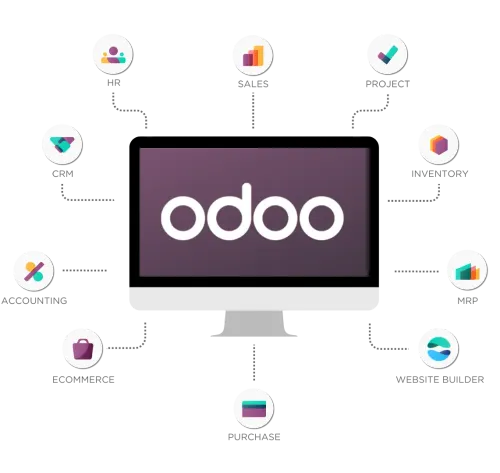
Why ERP?
Efficiency: Automates repetitive tasks like invoicing, reporting, and approvals.
Visibility: Gives managers real-time insights across departments.
Scalability: Grows with your company—whether you’re 10 employees or 10,000.
Accuracy: Reduces errors from manual data entry and fragmented systems.
Collaboration: Different teams (finance, HR, sales, etc.) work off the same data.
ERP in action
Efficiency: Automates repetitive tasks like invoicing, reporting, and approvals.
Visibility: Gives managers real-time insights across departments.
Scalability: Grows with your company—whether you’re 10 employees or 10,000.
Accuracy: Reduces errors from manual data entry and fragmented systems.
Collaboration: Different teams (finance, HR, sales, etc.) work off the same data.
Enterprise Resource Planning (ERP) is a software platform that manages and integrates your core business processes in real time. It replaces scattered tools with one system, giving you a complete picture of how your business is performing—finance, people, inventory, customers, projects, all in one place.
Instead of wasting hours reconciling spreadsheets or chasing approvals, ERP automates routine work and connects your teams with accurate data, so decisions are faster and smarter.
Modules We Provide
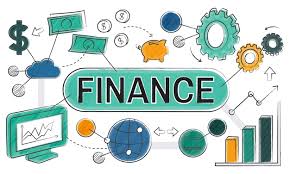
1. General Ledger (GL)
All your financial data ends up here — income, expenses, assets, liabilities.
-
Create multi-level account structures.
-
Auto-post entries from other modules (sales, payroll, inventory).
-
Generate trial balances, balance sheets, and income statements in real time.
Purpose: Gives management a live, trustworthy picture of company performance.
2. Accounts Payable (AP)
Handles every outgoing payment and keeps vendors happy without overpaying.
-
Record and approve supplier invoices.
-
Match purchase orders with receipts before releasing payment.
-
Schedule due dates and automate reminders.
-
Track vendor balances and early-payment discounts.
Purpose: Prevents duplicate or late payments and improves supplier relations.
3. Accounts Receivable (AR)
Where your incoming money lives.
-
Generate and email invoices automatically.
-
Track who owes what, with credit limits and payment history.
-
Send alerts for overdue balances and automate receipts.
-
Integrate with CRM to link customers and sales invoices.
Purpose: Improves cash flow by tightening collection and visibility.
4. Cash & Bank Management
Keeps daily liquidity under control.
-
Manage multiple bank accounts and petty cash.
-
Automate bank reconciliation and transaction imports.
-
Handle currency exchange and revaluation.
-
Real-time cash-flow forecasting.
Purpose: Ensures accurate cash positions and smarter short-term financial planning.
5. Budgeting & Forecasting
Turns planning from guesswork into measurable control.
-
Create department-level or project-based budgets.
-
Compare actual vs. planned spending automatically.
-
Simulate “what-if” financial scenarios.
-
Lock and version budgets for audit tracking.
Purpose: Gives managers control over spending before it happens, not after.
6. Fixed Assets Management
For tracking everything your company owns — machines, vehicles, IT gear, even furniture.
-
Record purchases, depreciation, and disposal.
-
Auto-calculate depreciation by method and period.
-
Tag assets to locations, departments, or users.
-
Integrate with Maintenance and Accounting for full traceability.
Purpose: Protects company property and provides accurate asset valuation.
7. Tax & Compliance
Avoids those heart-stopping calls from auditors.
-
Configure multiple tax types (VAT, withholding, etc.).
-
Auto-calculate taxes on sales and purchases.
-
Generate tax returns and electronic filings.
-
Full audit trail with date, user, and transaction history.
Purpose: Keeps your company compliant and audit-ready at all times.
8. Financial Reporting & Analytics
Because data is only useful if you can read it.
-
Real-time dashboards for cash flow, revenue, and expenses.
-
Customizable financial statements by company, branch, or project.
-
Drill down to transaction details from any report.
-
Export reports to PDF, Excel, or live dashboards.
Purpose: Enables informed decisions and gives leadership confidence in every number.
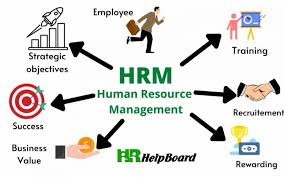
1. Employee Information Management
A single, centralized database for all employee records.
-
Store personal details, contact info, job position, and company hierarchy.
-
Track employment history, transfers, promotions, and training.
-
Attach scanned documents (contracts, IDs, certificates).
-
Role-based access to protect sensitive employee data.
Purpose: Eliminates paper files and keeps employee data secure, accurate, and easy to find.
2. Recruitment & Onboarding
Handles the full hiring journey — from job posting to first-day setup.
-
Manage job openings and applications in one system.
-
Schedule interviews and record feedback.
-
Generate offer letters and employment contracts automatically.
-
Onboard new hires with task checklists and document tracking.
Purpose: Speeds up hiring and ensures a smooth, professional experience for new employees.
3. Payroll Management
Integrates directly with Accounting to make salary processing painless.
-
Calculate gross pay, deductions, and net salary automatically.
-
Handle bonuses, overtime, and tax deductions accurately.
-
Generate payslips and bank transfer lists.
-
Multi-currency and multi-company payroll support.
Purpose: Reduces payroll errors and saves hours every pay cycle.
4. Attendance & Leave Management
Tracks employee presence and absence without the drama.
-
Clock-in/clock-out via biometric, web, or mobile apps.
-
Automatic attendance logs integrated with payroll.
-
Leave request, approval, and balance tracking workflows.
-
Public holidays and shift schedules configurable by company.
Purpose: Keeps attendance fair, transparent, and effortlessly linked to payroll.
5. Performance Management
Turns appraisals from an annual headache into a continuous improvement system.
-
Set goals and KPIs per role or department.
-
Track progress and feedback throughout the year.
-
360° evaluations with manager and peer reviews.
-
Generate performance reports for promotion or training decisions.
Purpose: Builds accountability and helps identify top performers early.
6. Training & Development
Invests in employee growth instead of letting talent stagnate.
-
Maintain a library of training programs and certifications.
-
Schedule sessions, track attendance, and record results.
-
Identify skill gaps automatically from performance data.
-
Integrate with employee profiles for career path tracking.
Purpose: Keeps your workforce skilled, motivated, and ready for new challenges.
7. Benefits & Compensation
Manages non-salary benefits so HR doesn’t drown in spreadsheets.
-
Define allowances, insurance, pensions, and bonuses.
-
Automate eligibility rules and deduction logic.
-
Integrate benefits data with Payroll and Accounting.
-
Generate detailed reports for audits and management.
Purpose: Simplifies complex compensation structures and ensures fairness.
8. Employee Self-Service Portal
Gives staff access to their own information and requests.
-
Submit leave, reimbursement, or document requests online.
-
View payslips, attendance records, and company notices.
-
Update personal information with HR approval workflow.
-
Available via web or mobile app.
Purpose: Reduces HR workload and makes employees more independent.
9. Compliance & Policy Management
Keeps the organization legally clean and culturally consistent.
-
Define and publish HR policies company-wide.
-
Track contract renewals, ID expirations, and mandatory trainings.
-
Generate compliance reports for audits or inspections.
-
Alert HR about upcoming renewals or violations.
Purpose: Protects the company from compliance risks and policy gaps.
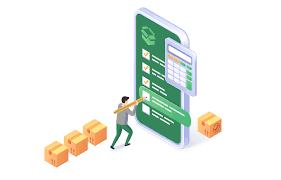
This module controls every physical item that moves through your company — from raw materials and spare parts to laptops and delivery trucks. It keeps quantity, value, and location accurate in real time.
1. Inventory Control
The heart of warehouse management.
-
Real-time tracking of stock quantities and locations.
-
Record item codes, serial numbers, and batch details.
-
Set minimum and reorder levels with automatic alerts.
-
FIFO, LIFO, or weighted-average costing options.
Purpose: Prevents stockouts, overstocking, and the mysterious “missing item” problem that kills margins.
2. Warehouse Management
Organizes how items move inside and between warehouses.
-
Multi-warehouse, multi-location support.
-
Define bins, racks, and zones for precise item placement.
-
Record transfers between sites or branches.
-
Integration with barcode/QR code scanners.
Purpose: Makes warehouses smarter and faster instead of chaotic.
3. Purchase & Receiving Integration
Keeps procurement and inventory in sync.
-
Automatically updates stock on goods receipt.
-
Match purchase orders with received quantities.
-
Record quality checks and rejections at receiving stage.
-
Track pending orders and supplier performance.
Purpose: Eliminates double entry and gives full visibility from purchase to storage.
4. Stock Movement & Transfer Tracking
Every movement is recorded — no more invisible inventory.
-
Issue stock to departments or projects.
-
Approve and log internal transfers digitally.
-
Real-time balance update across all locations.
-
Full audit trail of who moved what, when, and why.
Purpose: Strengthens accountability and makes reconciliation painless.
5. Asset Management
For items that last longer than a single transaction — vehicles, machines, computers, furniture.
-
Record acquisition cost, location, and responsible employee.
-
Schedule and track preventive maintenance.
-
Manage warranties and service contracts.
-
Handle disposal, sale, or reassignment with approval workflows.
Purpose: Extends asset life, avoids downtime, and keeps depreciation accurate.
6. Depreciation & Valuation
Integrates seamlessly with Accounting.
-
Multiple depreciation methods (straight-line, declining balance, units of use).
-
Auto-calculate depreciation monthly or yearly.
-
Revalue assets and track adjustments.
-
Post depreciation entries directly to the General Ledger.
Purpose: Keeps asset values current and compliant with accounting standards.
7. Inventory Costing & Valuation
Ties your stock value to financial accuracy.
-
Automatically calculate cost of goods sold (COGS).
-
Valuate inventory by method and category.
-
Generate monthly and annual stock valuation reports.
-
Integrate with Finance for audit and tax compliance.
Purpose: Ensures financial reports reflect the true cost of materials and goods.
8. Maintenance Management
Because neglected assets turn into expensive problems.
-
Schedule regular service for machinery and equipment.
-
Track maintenance requests, costs, and spare-part usage.
-
Monitor downtime and repair history.
-
Link maintenance data with asset and inventory records.
Purpose: Keeps operations running smoothly and reduces unplanned outages.
9. Reporting & Analytics
Data that helps managers act instead of guess.
-
Stock movement history, fast/slow-moving item reports.
-
Asset depreciation, aging, and maintenance cost analysis.
-
Warehouse efficiency metrics and stock value trends.
-
Exportable dashboards for management review.
Purpose: Gives decision-makers clear visibility of materials, assets, and costs at every moment.
This module manages your sales pipeline, customer interactions, and revenue tracking. It connects with Accounting, Inventory, and Marketing modules, giving you a complete view of every deal and every client.
1. Lead Management
Track potential clients from first contact to conversion.
-
Capture leads from multiple sources (website, email, phone, events).
-
Assign leads to sales reps automatically based on territory or expertise.
-
Track follow-ups, meetings, and communication history.
-
Score leads based on engagement and potential value.
Purpose: Ensures no opportunity is lost and sales teams prioritize the right leads.
2. Opportunity & Pipeline Management
Visualize and manage your sales process.
-
Create opportunities linked to leads or existing customers.
-
Track deals through stages: prospecting → negotiation → closing.
-
Set probability, expected revenue, and closing dates for each deal.
-
Generate pipeline reports for forecasting and resource planning.
Purpose: Improves sales visibility and helps forecast revenue accurately.
3. Quotation & Order Management
Streamline the path from quote to cash.
-
Generate professional quotes based on product catalogs and pricing rules.
-
Convert accepted quotes into sales orders automatically.
-
Track order fulfillment and delivery schedules.
-
Integrate with Inventory and Procurement for stock availability.
Purpose: Reduces manual errors and accelerates order processing.
4. Customer Database & Interaction Tracking
Keep all customer information in one place.
-
Maintain detailed profiles with contact info, preferences, and history.
-
Log emails, calls, meetings, and notes.
-
Assign tasks to sales reps for follow-ups or reminders.
-
Segment customers for targeted marketing and upselling.
Purpose: Improves customer relationships and builds long-term loyalty.
5. Sales Analytics & Reporting
Measure performance and optimize strategy.
-
Track individual and team sales performance.
-
Analyze trends in revenue, product demand, and customer behavior.
-
Generate reports for pipeline, closed deals, and forecasting.
-
Export dashboards and reports for management review.
Purpose: Provides actionable insights to increase revenue and efficiency.
6. Integration with Accounting & Inventory
Keep finances and stock aligned with sales.
-
Automatic invoice creation when orders are confirmed.
-
Real-time stock updates as orders are processed.
-
Track outstanding payments and customer credit limits.
-
Ensure accurate COGS and revenue reporting.
Purpose: Reduces errors, improves cash flow, and links sales with operational data.
7. Customer Support & Service Management
Optional module for after-sales support.
-
Track support tickets linked to customer orders.
-
Manage warranty claims, returns, and service requests.
-
Analyze service trends and customer satisfaction.
Purpose: Enhances post-sales experience and builds trust with clients.
8. Mobile & Remote Access
Empowers sales teams on the go.
-
Access leads, opportunities, and customer data from mobile devices.
-
Update visit notes and orders in real-time.
-
Receive alerts for high-priority tasks or customer actions.
Purpose: Keeps your team responsive and productive anywhere.
9. Automation & Alerts
Automate repetitive sales tasks.
-
Follow-up reminders for leads and opportunities.
-
Automatic notifications for order approvals, stock issues, or expiring contracts.
-
Integration with email/SMS for communication.
Purpose: Reduces manual work and ensures timely action on every sales opportunity.
10. Reporting & Analytics Dashboards
Centralized view for management.
-
Sales trends by product, region, or team.
-
Customer segmentation and lifetime value reports.
-
Pipeline, conversion, and performance dashboards.
Purpose: Supports strategic decision-making and helps grow revenue efficiently.
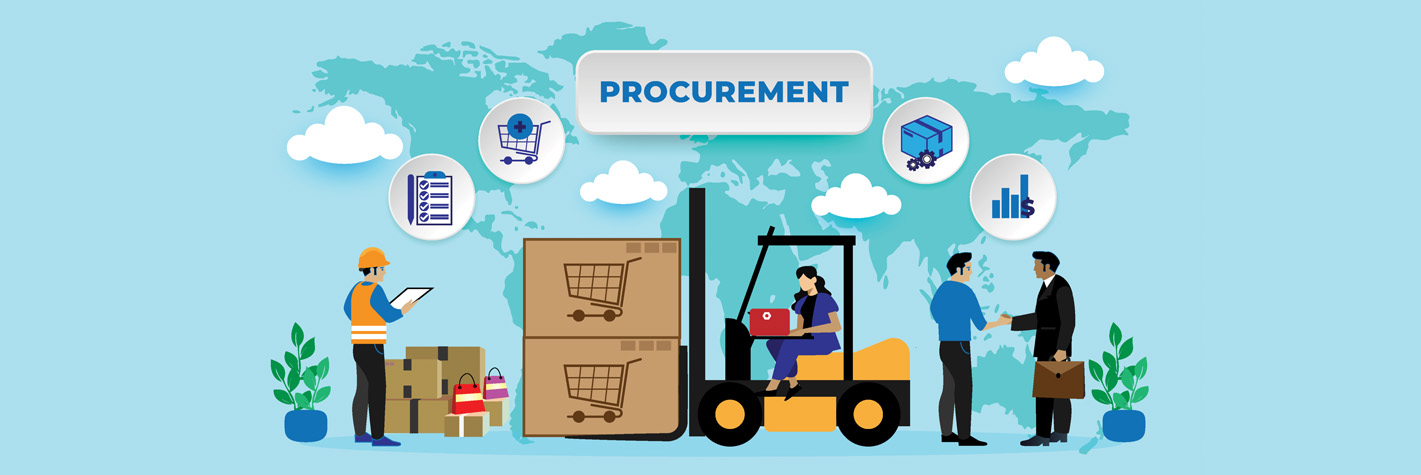
This module manages how your company sources, purchases, and receives materials or services. It links vendors, warehouses, and finance teams, ensuring every purchase is transparent, timely, and cost-effective.
1. Purchase Requisition & Approval Workflow
Turns manual paper trails into automated requests.
-
Employees can create digital purchase requisitions.
-
Set up multi-level approval workflows by department or budget.
-
Track request status and approval history in real time.
-
Automatically notify approvers and requesters at each step.
Purpose: Prevents unauthorized spending and speeds up procurement decisions.
2. Supplier & Vendor Management
Keeps a clean, centralized supplier database.
-
Register supplier profiles, tax details, and payment terms.
-
Rate suppliers by quality, delivery speed, and reliability.
-
Track contract terms, renewal dates, and communication history.
-
Maintain blacklists or preferred vendor lists.
Purpose: Builds stronger vendor relationships and reduces purchase risks.
3. Request for Quotation (RFQ) & Tender Management
Simplifies comparing suppliers before committing.
-
Create and send RFQs to multiple suppliers at once.
-
Record and compare prices, delivery times, and conditions.
-
Auto-generate purchase orders from winning bids.
-
Archive tender responses for audit and compliance.
Purpose: Ensures fair competition and better pricing for your company.
4. Purchase Order Management
The control center of buying operations.
-
Generate and send POs directly to suppliers.
-
Link POs with approved requisitions and budgets.
-
Track order status: pending, shipped, or completed.
-
Manage partial deliveries and balance quantities.
Purpose: Reduces manual follow-up and keeps procurement fully traceable.
5. Goods Receipt & Inspection
Guarantees what you ordered is exactly what you got.
-
Record incoming goods by PO or supplier.
-
Perform quantity and quality checks.
-
Manage rejections, returns, or replacements easily.
-
Automatically update inventory levels after approval.
Purpose: Keeps your warehouse accurate and your finance records honest.
6. Invoice Matching & Payment Tracking
Bridges Procurement with Accounting.
-
Match supplier invoices with POs and goods receipts (3-way match).
-
Approve invoices for payment automatically after verification.
-
Track due dates, early-payment discounts, and pending balances.
-
Integrate with accounting for expense posting.
Purpose: Eliminates duplicate or false payments and maintains audit integrity.
7. Contract & Agreement Management
Never lose track of supplier commitments.
-
Store purchase contracts and service agreements in one place.
-
Set alerts for renewal, expiry, or renegotiation dates.
-
Record amendments and price revisions with full history.
Purpose: Ensures compliance and avoids lapses in critical supply contracts.
8. Budget & Spend Control
Keeps procurement aligned with company finances.
-
Set department- or project-based purchase limits.
-
Validate requests and POs against available budget.
-
Generate budget utilization reports in real time.
Purpose: Prevents overspending and supports financial planning.
9. Logistics & Supply Chain Tracking
Tracks material movement across suppliers, warehouses, and branches.
-
Monitor shipment status and delivery performance.
-
Plan inbound and outbound logistics efficiently.
-
Integrate with warehouse and inventory modules.
Purpose: Creates end-to-end visibility across the entire supply chain.
10. Reporting & Analytics
Turns procurement data into insight.
-
Supplier performance reports and cost trend analysis.
-
Purchase cycle time, budget variance, and savings reports.
-
Dashboard views for management and auditors.
Purpose: Supports strategic purchasing and smarter business decisions.
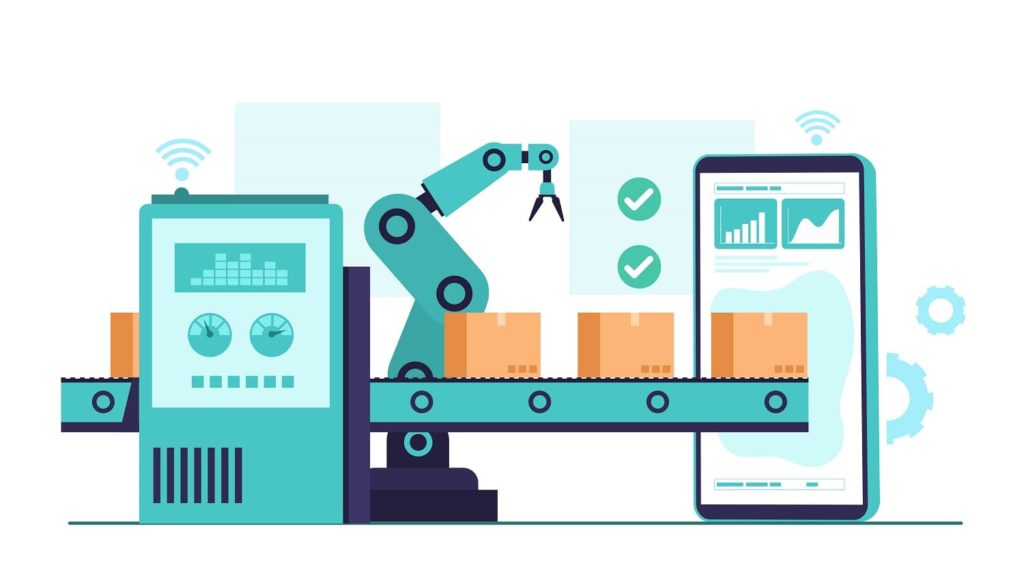
This module manages the entire production process, from planning and scheduling to quality control and output tracking. It connects raw materials, inventory, and work orders to ensure efficient manufacturing operations.
1. Bill of Materials (BOM) Management
Defines what materials are needed to produce each product.
-
Create multi-level BOMs for complex products.
-
Track components, subassemblies, and finished goods.
-
Manage revisions and versions of BOMs automatically.
Purpose: Ensures accurate material planning and reduces production errors.
2. Production Planning & Scheduling
Optimizes production timelines and resources.
-
Plan production orders based on demand forecasts and stock levels.
-
Schedule machines, labor, and work centers efficiently.
-
Track progress in real time and adjust schedules dynamically.
Purpose: Reduces downtime, improves resource utilization, and meets delivery deadlines.
3. Shop Floor Control
Monitors production activities on the factory floor.
-
Track work-in-progress (WIP) at each stage.
-
Record labor and machine hours for accurate costing.
-
Capture quality checks and defects in real time.
Purpose: Provides visibility into operations and ensures quality standards.
4. Quality Management
Ensures products meet required standards.
-
Define inspection criteria at different production stages.
-
Record test results, defects, and corrective actions.
-
Integrate quality data with production and inventory modules.
Purpose: Reduces waste, improves customer satisfaction, and ensures compliance.
5. Maintenance & Equipment Management
Keeps machinery operational.
-
Schedule preventive maintenance and track repairs.
-
Monitor equipment downtime and usage.
-
Maintain maintenance history for all assets.
Purpose: Minimizes production interruptions and extends equipment life.
6. Reporting & Analytics
Measure efficiency and track KPIs.
-
Production output, scrap rate, and machine utilization.
-
Cost analysis per product or production batch.
-
Customizable dashboards for managers and executives.
Purpose: Helps optimize production processes and reduce costs.
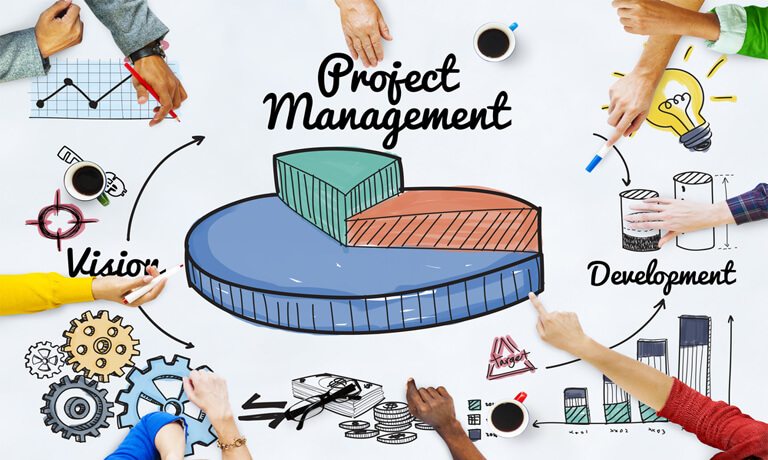
This module helps plan, execute, and monitor projects efficiently, ensuring deadlines, budgets, and quality targets are met.
1. Task & Workflow Management
Organize projects into tasks and subtasks.
-
Assign responsibilities to team members.
-
Track task progress and deadlines.
-
Visualize tasks with Gantt charts or Kanban boards.
Purpose: Ensures work is structured and everyone knows what to do.
2. Resource & Time Allocation
Manage people, equipment, and budgets effectively.
-
Assign resources to tasks and monitor availability.
-
Track hours worked per project or task.
-
Avoid overbooking or underutilizing resources.
Purpose: Optimizes productivity and keeps projects on schedule.
3. Budgeting & Cost Tracking
Monitor project finances in real time.
-
Define project budgets and allocate expenses.
-
Track actual vs. planned costs for tasks and resources.
-
Generate alerts for budget overruns.
Purpose: Prevents cost overruns and ensures financial accountability.
4. Quality Management
Ensures products meet required standards.
-
Define inspection criteria at different production stages.
-
Record test results, defects, and corrective actions.
-
Integrate quality data with production and inventory modules.
Purpose: Reduces waste, improves customer satisfaction, and ensures compliance.
5. Maintenance & Equipment Management
Keeps machinery operational.
-
Schedule preventive maintenance and track repairs.
-
Monitor equipment downtime and usage.
-
Maintain maintenance history for all assets.
Purpose: Minimizes production interruptions and extends equipment life.
6. Reporting & Analytics
Measure efficiency and track KPIs.
-
Production output, scrap rate, and machine utilization.
-
Cost analysis per product or production batch.
-
Customizable dashboards for managers and executives.
Purpose: Helps optimize production processes and reduce costs.
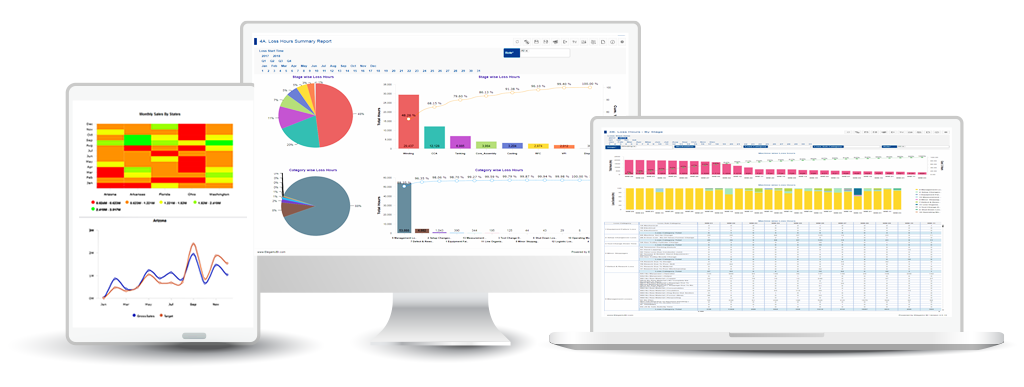
This module turns raw data from all ERP modules into actionable insights, helping management make informed decisions.
1. Data Integration
Consolidates information from finance, sales, HR, inventory, and production.
-
Connect multiple databases and modules.
-
Ensure clean, accurate, and up-to-date data.
Purpose: Provides a single source of truth for the business.
2. Dashboards & KPI Tracking
Visualize performance metrics in real time.
-
Customizable dashboards for departments and executives.
-
Track KPIs like revenue, expenses, production efficiency, and employee performance.
-
Drill-down capabilities to see details behind the metrics.
Purpose: Enables quick decision-making and proactive management.
3. Advanced Analytics & Forecasting
Predict trends and identify opportunities.
-
Perform trend analysis and predictive modeling.
-
Forecast sales, inventory needs, and project outcomes.
-
Identify anomalies or inefficiencies.
Purpose: Turns data into forward-looking insights for strategic planning.
4. Reports & Exports
Generate and share insights easily.
-
Standardized and custom reports in PDF, Excel, or online dashboards.
-
Scheduled automated reports for management teams.
-
Integration with other modules for real-time reporting.
Purpose: Saves time and ensures stakeholders have the information they need.
5. Decision Support & Alerts
Helps management act on insights quickly.
-
Set alerts for KPI thresholds, budget overruns, or production issues.
-
Provide scenario analysis for strategic decisions.
Purpose: Improves responsiveness and reduces risk from delayed information.
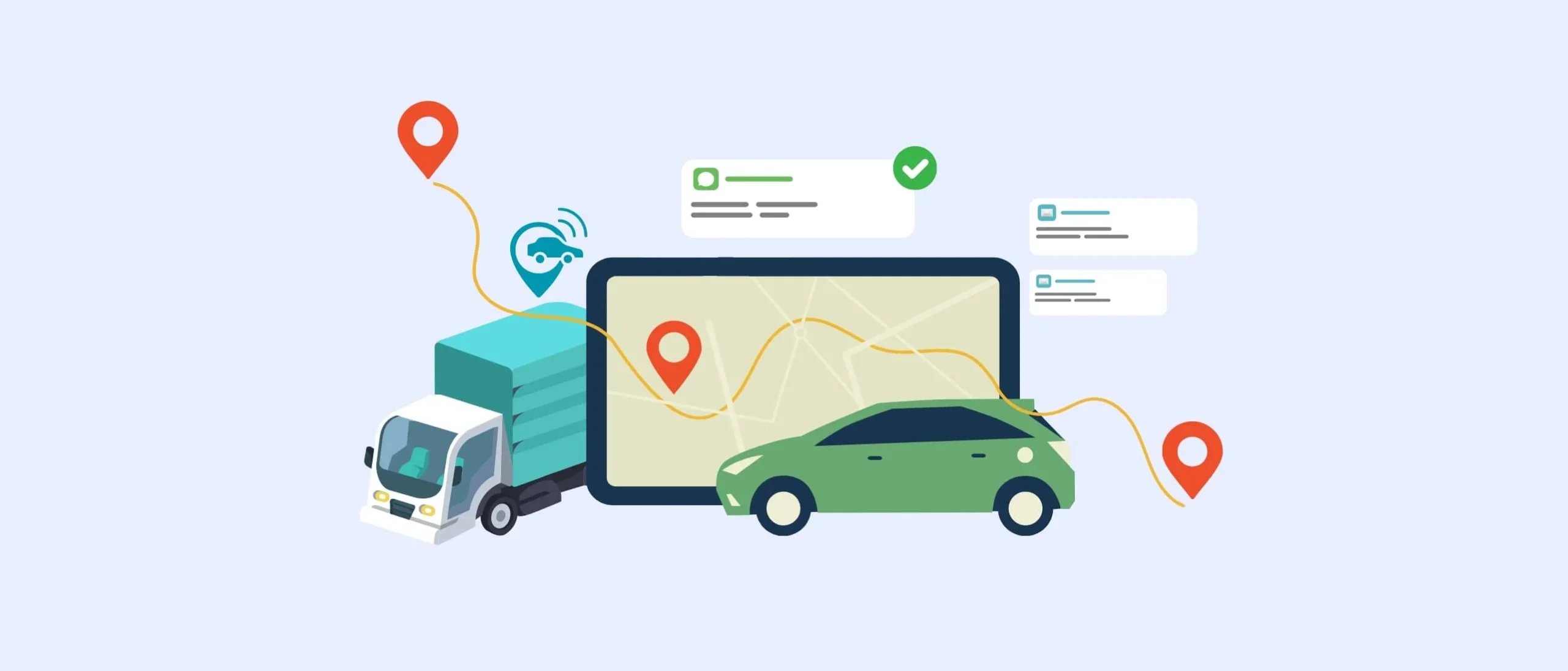
This module manages all company vehicles — from cars and trucks to specialized equipment. It ensures efficient usage, maintenance, and cost control.
1. Vehicle Register & Tracking
Keep complete records of all vehicles.
-
Store details: registration, model, mileage, fuel type, and assigned driver.
-
Track vehicle location via GPS (optional).
-
Record usage history and trips.
Purpose: Improves accountability and reduces misuse of vehicles.
2. Maintenance & Repairs
Ensure vehicles stay roadworthy and safe.
-
Schedule preventive maintenance and inspections.
-
Track repairs, spare parts usage, and service costs.
-
Alert for upcoming maintenance or expired insurance.
Purpose: Reduces downtime, prevents breakdowns, and saves repair costs.
3. Fuel & Expense Management
Control costs associated with fleet operations.
-
Record fuel consumption and efficiency.
-
Track tolls, fines, and other vehicle expenses.
-
Integrate expenses with Accounting module.
Purpose: Helps optimize costs and improves fleet budgeting.
4. Driver & Assignment Management
Manage who drives which vehicle and when.
-
Assign vehicles to drivers and track schedules.
-
Record driver performance, incidents, or violations.
-
Maintain licenses and training compliance.
Purpose: Ensures safe and efficient use of fleet resources.
5. Trip & Route Planning
Optimize logistics and field operations.
-
Plan routes for deliveries, service calls, or pickups.
-
Track vehicle usage and travel time.
-
Reduce fuel consumption and improve delivery efficiency.
Purpose: Saves time and operational costs while improving service.
6. Reporting & Analytics
Turn fleet data into actionable insight.
-
Vehicle utilization, maintenance costs, and efficiency reports.
-
Track fuel consumption trends and fleet performance.
-
Export reports for management review and audits.
Purpose: Helps management make informed decisions about fleet operations.
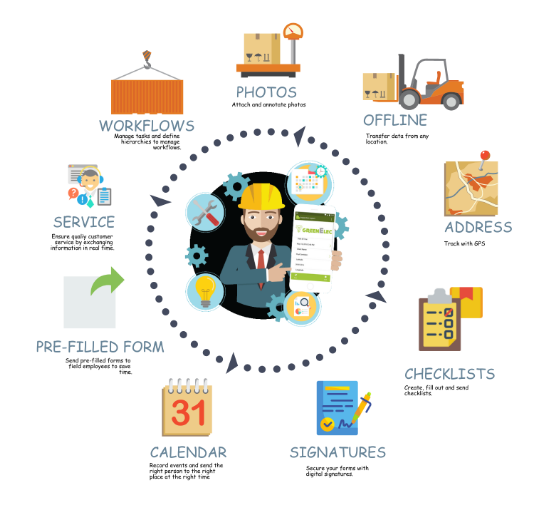
This module handles on-site service, maintenance, and workshop operations, connecting staff, assets, and customers for smooth execution.
1. Job / Work Order Management
Track every service or field assignment.
-
Create and assign work orders to staff or technicians.
-
Include detailed instructions, required tools, and materials.
-
Track status: pending, in-progress, or completed.
Purpose: Ensures accountability and visibility of field activities.
2. Resource & Equipment Management
Ensure the right tools and equipment are available.
-
Allocate tools, spare parts, and machines to work orders.
-
Track usage, availability, and maintenance of equipment.
Purpose: Reduces downtime and prevents lost or misused resources.
3. Scheduling & Dispatching
Organize field operations efficiently.
-
Assign tasks to technicians based on availability, skill, or location.
-
Plan routes for on-site visits.
-
Automate alerts for upcoming jobs.
Purpose: Maximizes staff efficiency and reduces response times.
4. Inventory & Materials Tracking
Keep materials used in workshops or fieldwork under control.
-
Track spare parts, consumables, and tools used per job.
-
Integrate with Inventory module for stock updates.
-
Alert for low stock levels.
Purpose: Prevents stockouts and ensures smooth field operations.
5. Time & Labor Tracking
Monitor staff performance and work hours.
-
Record hours spent per job or project.
-
Track overtime, travel time, and productivity.
-
Integrate with Payroll for accurate wage calculation.
Purpose: Ensures fair labor accounting and improves resource planning.
6. Reporting & Analytics
Measure efficiency and service quality.
-
Track job completion rates, response times, and costs.
-
Analyze resource usage and workshop performance.
-
Export dashboards for management and client reporting.
Purpose: Helps management optimize field operations and service delivery.